Mastering customer segmentation analysis [tips and techniques]
Jul 9, 2024
6 mins read
![Mastering customer segmentation analysis [tips and techniques]](/_next/image?url=https%3A%2F%2Fblog.usermaven.com%2Fwp-content%2Fuploads%2F2024%2F07%2FCustomer-segmentation-analysis-1.jpg&w=1920&q=75)
Have you ever felt like your customers are talking amongst themselves, but their voices are just out of reach?
You know they have needs and preferences, but you can’t quite grasp the details.
In the world of marketing, these are the “whispering customers.” They hold the key to unlocking successful campaigns, but their secrets remain hidden.
Demographics are a good starting point, but they only tell part of the story.
A one-size-fits-all marketing approach is like serving the same pizza to everyone at a party – it might satisfy a few, but it won’t impress anyone.
This lack of personalization leads to a crucial problem: your ideal customers, with their specific needs, become lost in the crowd.
It’s time to solve the problem!
Learn to do customer segmentation analysis with us, and discover how to craft targeted campaigns that truly speak to your customers’ hearts and minds.
The whispering customers are about to become your biggest fans.
Understanding customer segmentation
Customer segmentation involves dividing your customer base into distinct segments based on specific criteria such as demographics, behavior, or psychographics.
By understanding these distinctions, businesses can style their marketing efforts to target each segment effectively. This process enables companies to focus on the needs and preferences of different groups within their customer base, leading to more personalized marketing campaigns and increased customer satisfaction.
Moreover, customer segmentation analysis helps in identifying the most profitable segments, allowing businesses to allocate resources efficiently and maximize their marketing ROI. Understanding customer segmentation is crucial for developing successful marketing strategies that align with the diverse needs of your customer base.
The importance of segmenting your customers
Understanding the importance of segmenting your customers is crucial in maximizing the effectiveness of your marketing efforts. By dividing your customer base into distinct segments based on factors such as demographics, behavior, and purchase history, you can tailor your strategies to target each segment more precisely. This personalized approach increases customer satisfaction, enhances customer loyalty, and boosts overall sales.
The key points highlighting the importance of segmenting your customers are:
- Personalization: Segmentation allows you to adjust your messaging, offers, and experiences to specific groups of customers, enabling a more personalized approach.
- Targeted marketing: With segmented customer data, you can create targeted marketing campaigns that resonate better with each segment, improving the effectiveness of your marketing efforts.
- Customer insights: Segmentation helps you gain deeper insights into the behaviors, preferences, and needs of different customer groups, enabling data-driven decision-making.
- Improved engagement: By delivering relevant and personalized content to each segment, you can improve customer engagement and foster stronger relationships.
- Conversion optimization: By targeting the right customers with the right messages at the right time, segmentation can lead to higher conversion rates and increased revenue.
- Customer retention: Understanding and catering to the needs of different customer segments can enhance customer satisfaction and loyalty, leading to improved customer retention.
- Resource allocation: Segmentation helps you allocate your resources more efficiently by focusing on the most valuable and promising customer segments.
Different models of customer segmentation
Segmentation analysis employs various models to categorize customer segments effectively.
- Demographic segmentation looks at factors like age and income.
- Geographic segmentation considers where customers are located.
- Psychographic segmentation delves into lifestyle and personality traits.
- Behavioral segmentation analyzes past actions and purchase history.
- Value-based segmentation focuses on the profitability of each segment.
Utilizing a combination of these models enables businesses to target specific customer groups with required marketing strategies. By understanding the nuances of different segmentation models, companies can refine their approaches to customer segmentation analysis and enhance overall business performance.
Demographic segmentation: A closer look
Demographic segmentation divides customers based on quantifiable characteristics like age, gender, income, education, and occupation. This method categorizes consumers into groups with common traits, helping businesses adapt their strategies effectively. By analyzing demographic data, companies can better understand their target audience and create personalized marketing campaigns.
For instance, a clothing brand might target different age groups with specific promotions or designs. Moreover, demographic segmentation guides product development, pricing strategies, and communication channels. Understanding the unique characteristics of each group enhances customer engagement and fosters brand loyalty, demonstrating the significance of demographic segmentation in maximizing marketing efforts.
Exploring geographic segmentation
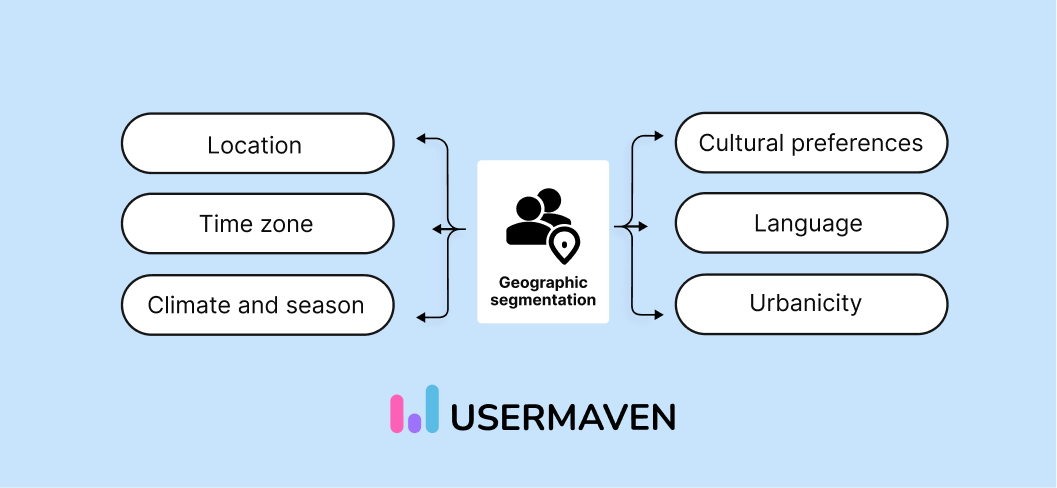
Geographic segmentation divides the customer base based on locations, such as countries, regions, or cities. By understanding the varying needs and preferences across different regions, businesses can tailor their marketing efforts effectively. This segmentation strategy considers factors like climate, population density, and cultural influences that impact consumer behavior.
Leveraging geographic data helps target specific areas for promotions and optimize the distribution of products. It allows companies to create location-specific campaigns that resonate with the local audience, enhancing customer engagement and ultimately driving sales. Embracing geographic segmentation can lead to a more personalized approach to reaching diverse customer demographics.
Psychographic segmentation: Beyond demographics
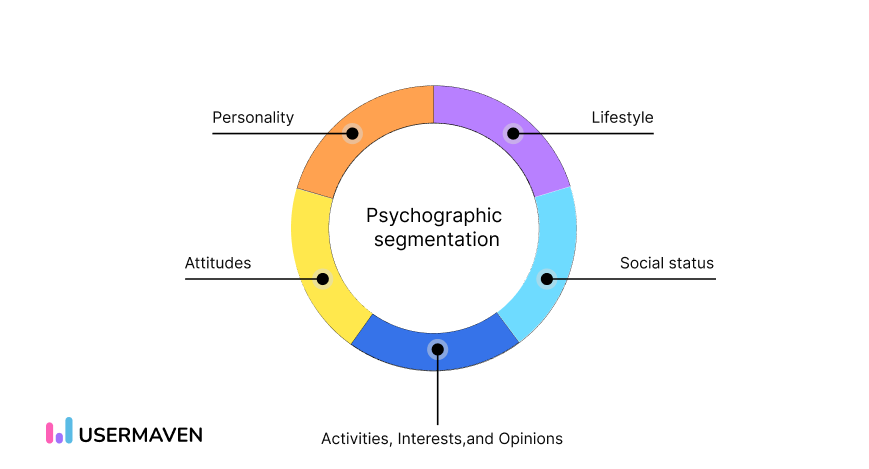
Psychographic segmentation delves deeper into customer segmentation by moving beyond simple demographics. This technique involves understanding customers’ lifestyles, interests, values, and personalities to create more nuanced segments. By considering psychological factors, businesses can tailor their marketing strategies to resonate emotionally with customers.
Psychographic segmentation goes beyond just knowing who your customers are; it focuses on why they make purchasing decisions. This approach allows companies to connect with consumers on a more personal level, leading to increased engagement and loyalty. Incorporating psychographic segmentation in your analysis can provide valuable insights into the motivations and behaviors that drive customer actions.
Behavioral segmentation: Predicting customer behavior
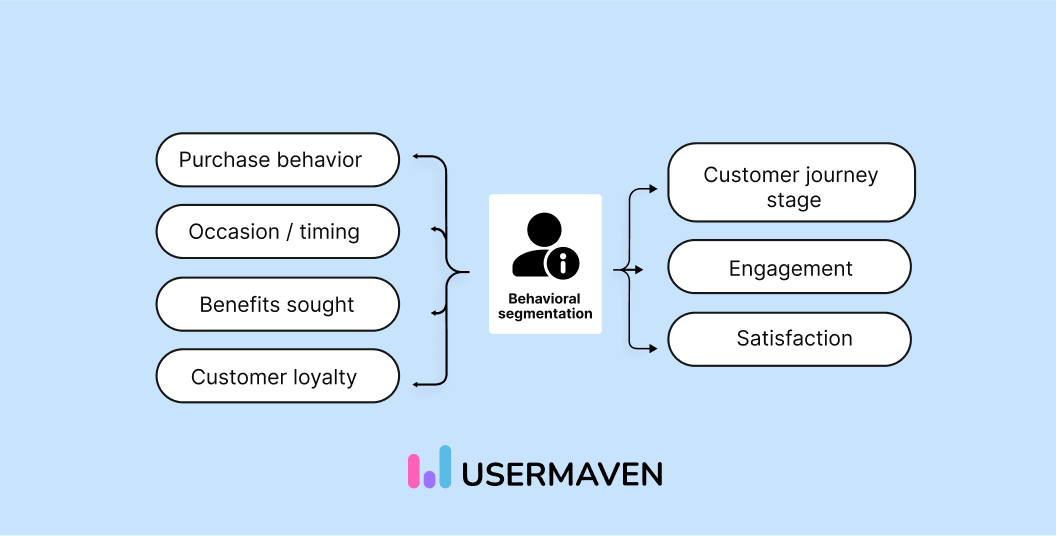
Behavioral segmentation in customer analysis involves predicting customer behavior based on past interactions with a brand. By examining purchase history, website interactions, and responses to marketing campaigns, businesses can anticipate future actions. This method goes beyond traditional demographics, focusing on actions rather than traits.
Understanding how customers engage with products/services helps align marketing efforts to their needs, increasing relevance and customer satisfaction. Predicting preferences and tendencies allows for personalized targeting and improved customer experiences, boosting retention and loyalty.
Utilizing behavioral data is an effective way to enhance marketing strategies and drive customer engagement. Harnessing these insights empowers businesses to meet the unique needs of each segment.
Value-based segmentation: Identifying your most profitable customers
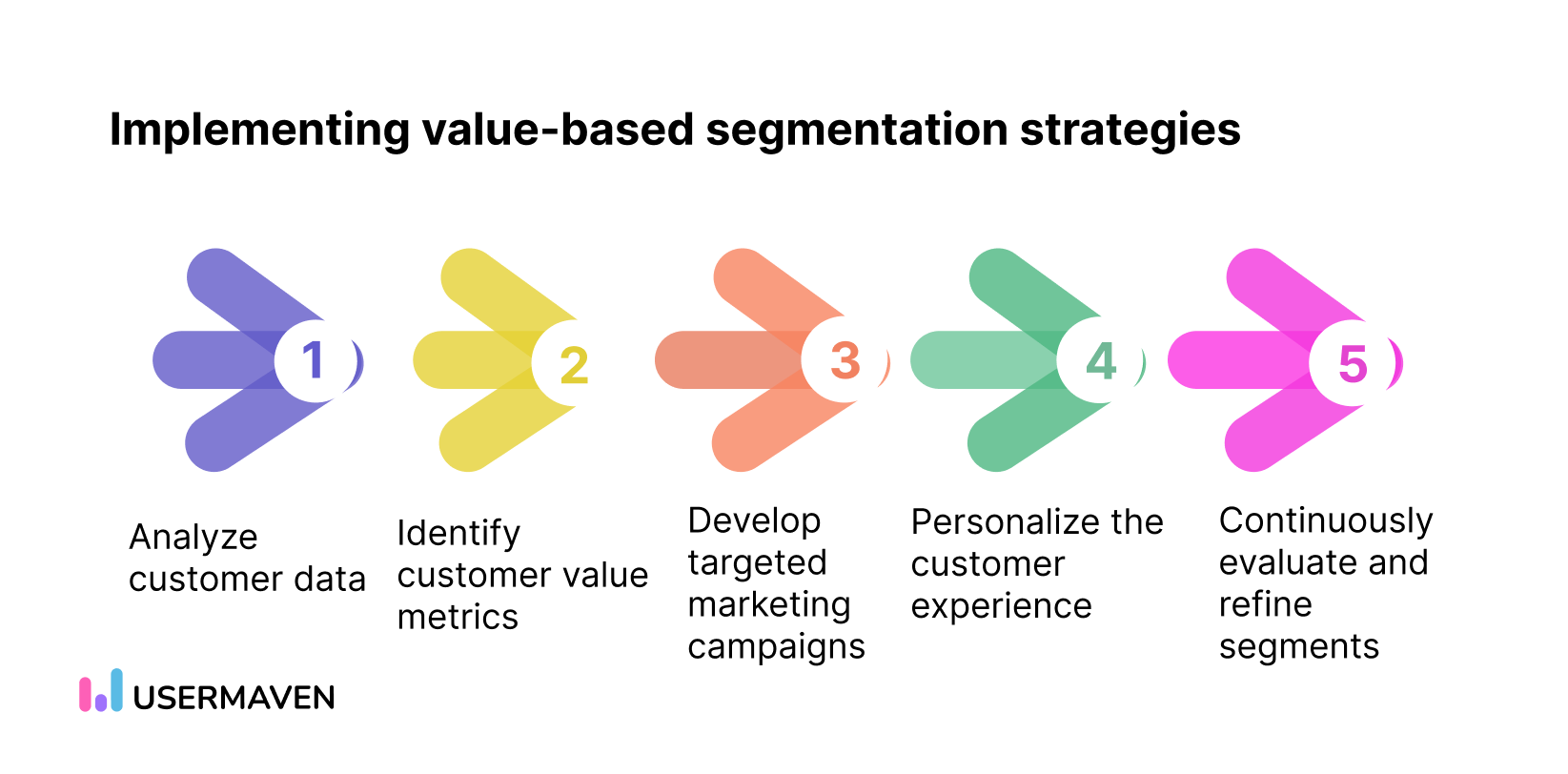
Value-based segmentation focuses on identifying and categorizing customers based on their profitability. By analyzing the value that each customer brings to the business, companies can prioritize high-worth customers for personalized marketing efforts.
This approach goes beyond traditional segmentation methods by considering not just the traits of customers but also their economic impact on the company. Using customer data such as purchase history, customer lifetime value, and frequency of transactions, businesses can manage their strategies to maximize revenue from their most valuable customers. Understanding the profitability of different customer segments is crucial for allocating resources effectively and enhancing overall business performance.
A step-by-step guide to conducting customer segmentation analysis
Customer segmentation analysis is a step-by-step process that helps businesses understand their customers and optimize their marketing strategies. Here is a guide to conducting customer segmentation analysis:
Gather customer segment data
- Choose a segmentation strategy that aligns with your business goals and target audience.
- Collect customer data from various sources, such as sales data, website analytics, email marketing platforms, surveys, social media analytics, and customer support interactions.
- Ensure comprehensive data collection across different channels and platforms to get a comprehensive view of your customer segments.
Define your segmentation strategy
- Determine your target market and identify the specific customer segments you want to analyze.
- Consider demographic, geographic, psychographic, and behavioral factors to define your segmentation strategy.
- Align your segmentation strategy with your business objectives and marketing goals.
Analyze segment performance
- Measure how different customer segments perform against your business objectives.
- Compare key performance indicators (KPIs) such as customer lifetime value, customer satisfaction, net promoter score, referrals, and conversion rates.
- Identify segments that are performing well and those that require improvement.
Get input and feedback
- Engage with your team members and customers to gather insights and feedback.
- Discuss customer segmentation analysis findings with relevant stakeholders to validate and expand your thinking.
- Conduct surveys, interviews, and focus groups to understand customer needs and preferences better.
Apply your findings
- Use the insights from your customer segmentation analysis to optimize your marketing and sales strategies.
- Manage your marketing messages and offers to specific customer segments.
- Make changes based on your new insights to better serve your customers and achieve your business goals.
By following this step-by-step guide, businesses can conduct effective customer segmentation analysis and gain valuable insights into their customer base.
Exploring segmentation analysis with Usermaven
Usermaven is a powerful tool that helps businesses achieve precision in customer segmentation. Usermaven’s Segments dynamically group visitors, users, and companies based on shared characteristics and behaviors, providing a powerful tool to organize, filter, and analyze workspace data effectively.
Creating segments in Usermaven can be done in a few simple steps:
- Navigate to the “Contacts Hub” on the left side of your Usermaven dashboard.
- Click on “Segments” in the left panel.
- To create a new segment, click on the “+” button.
- Choose the criteria for your segment by applying filters based on user characteristics, interactions, or other relevant factors.
- Use the AND/OR filters to combine multiple conditions for a more targeted segment.
- Once you’ve defined your segment, click “Save” to create it.
Segments are important because they allow you to divide your user base into specific groups for targeted analysis and engagement. By segmenting your users, you can tailor your messaging, offers, and product experiences to better meet the needs and preferences of each group, ultimately leading to improved user satisfaction, retention, and conversion rates.
Here are some key features and benefits of segmentation in Usermaven:
- Comprehensive event tracking: You can track any action occurring on your site or backend system as a custom event, with clear and organized segment names for easy management.
- Precise user identification: With segmentation, you can easily identify users or companies that have (or haven’t) performed specific actions within your product, enabling targeted interactions and personalized messaging.
- Flexible grouping: Segments can be created based on various attributes, such as subscription plans, roles, or common characteristics, providing a deeper understanding of your audience.
- Focused analytics: By applying segments, you can concentrate your analytics reports on the precise subset of data that interests you, leading to more meaningful insights.
- Dynamic updates: Usermaven’s segments are dynamic and automatically updated as new data comes in, ensuring that your analysis and decision-making processes are based on the most current and relevant information.
- Advanced filtering: Within the Contacts Hub, you can apply filters based on custom event count, event, time-range, and even compare data across different time periods, enabling in-depth analysis.
Related: How to track events
End-note
In conclusion, customer segmentation analysis is a powerful tool that empowers businesses to understand their customers on a deeper level. By segmenting your customer base and tailoring your marketing strategies accordingly, you can create a more personalized experience that resonates with your target audience.
This approach leads to increased customer satisfaction, loyalty, and, ultimately, business growth. With the help of advanced segmentation tools like Usermaven, you can gain valuable customer insights and craft targeted marketing campaigns that deliver superior results.
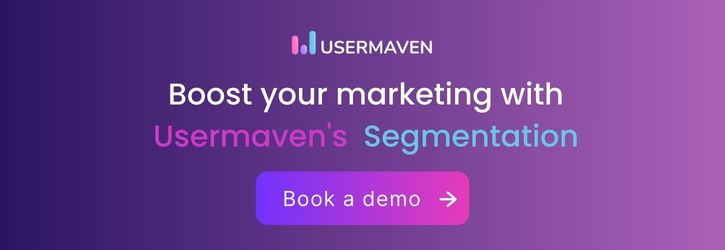
FAQs
1. What makes customer segmentation analysis essential?
Understanding customer segmentation is vital for targeted marketing strategies. Defining segments based on demographics, geography, psychographics, behavior, and value helps tailor offerings to specific customer needs, enhancing engagement and loyalty. Effective segmentation drives personalized communication and boosts overall business performance.
2. How often should customer segmentation be reviewed?
Customer segmentation should be reviewed periodically to ensure its relevance. Regular reviews help adapt to changing market dynamics and customer preferences. Ideally, reassess your segmentation strategy annually or when significant shifts occur in your target market.
3. Can small businesses benefit from customer segmentation?
Small businesses can greatly benefit from customer segmentation by understanding their customer base, tailoring marketing strategies, and maximizing resources effectively. With targeted approaches, small businesses can enhance customer satisfaction and increase profitability.
4. What are the first steps in starting customer segmentation?
To start customer segmentation, begin by collecting relevant customer data. Analyze this data to identify common characteristics. Next, define your segmentation criteria based on these insights. Finally, segment your customers into distinct groups for targeted marketing strategies.
5. How does customer segmentation influence product development?
Customer segmentation influences product development by providing insights into customer preferences and behaviors. Understanding different segments helps tailor products to specific needs, enhancing customer satisfaction and driving sales. By analyzing segmentation data, businesses can create targeted products that resonate with their customers’ unique characteristics.
Try for free
Simple & privacy-friendly analytics tool
Know what's happening at every touchpoint of your users’ journey with AI-powered analytics.
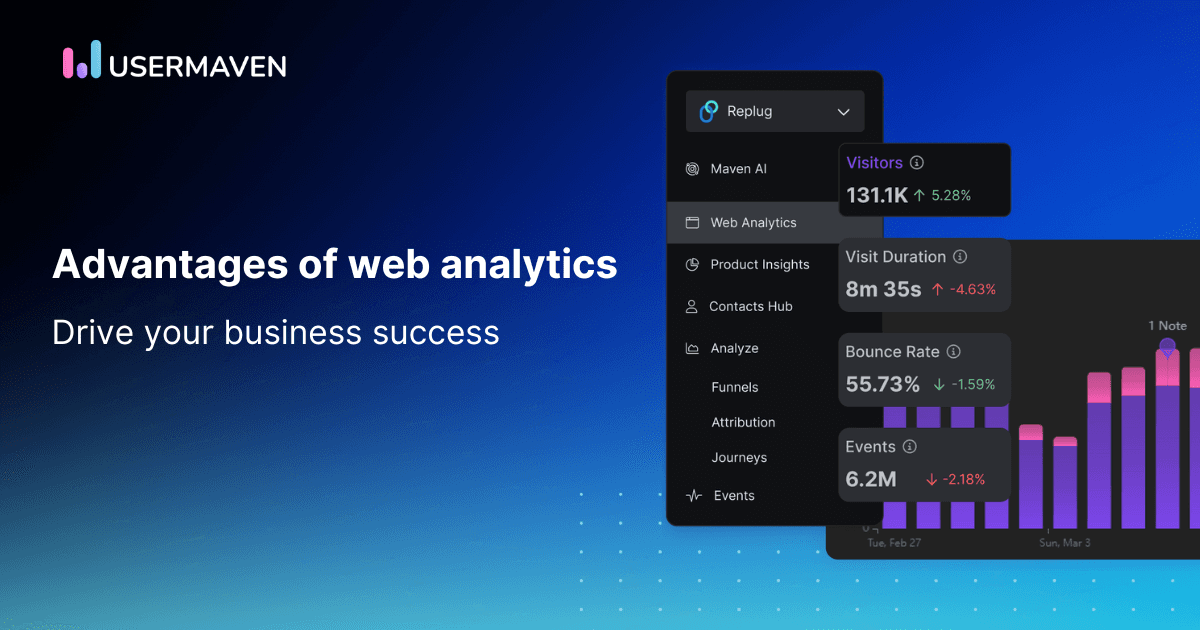

![[5 Top tips] Are you following these data governance best practices for your website?](/_next/image?url=https%3A%2F%2Fblog.usermaven.com%2Fwp-content%2Fuploads%2F2025%2F01%2FData-governance-best-practices.jpg&w=1920&q=75)